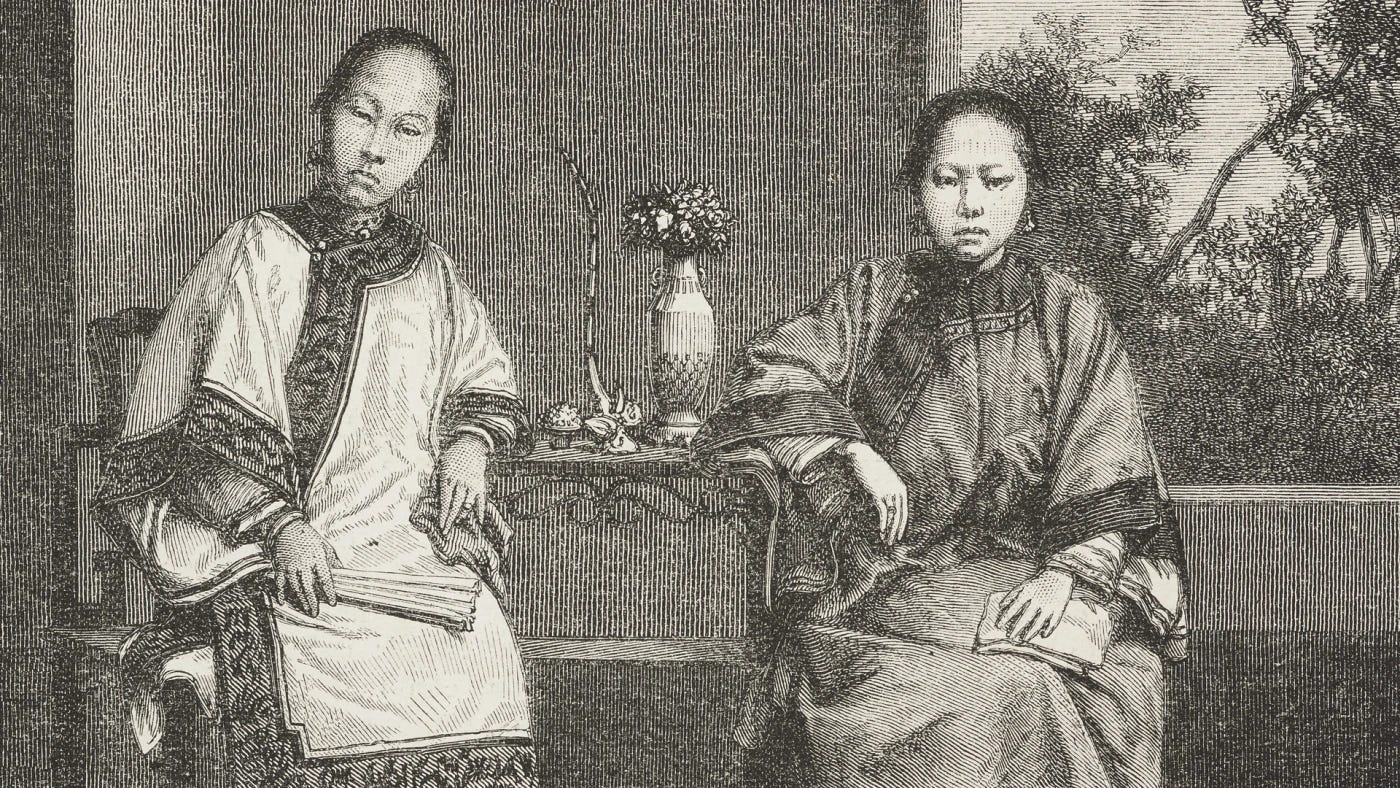
Where in the world?
The US under President Ulysses Grant
When in the world?
The Chinese Exclusion Act of 1882 is often seen as the first major law to restrict immigration in the US. But there is an earlier and lesser known law that was used to bar Chinese women from immigrating to the United States: The Page Act of 1875.
Who in the world?
In 1875, President Grant delivered a Seventh Annual Message to the Senate and House of Representatives, reaffirming the United States’ bearing regarding the immigration of Chinese women:
While this is being done I invite the attention of Congress to another, though perhaps no less an evil--the importation of Chinese women, but few of whom are brought to our shores to pursue honorable or useful occupations.
Ulysses S. Grant
December 7, 1875
What in the World?
The first Chinese immigrants began arriving in the United States in the 1850s. Many were fleeing the economic consequences of The Opium Wars (1839-42, 1856-60), when the British fought to keep opium trafficking routes open in defiance of China’s efforts to stop the illegal trade. An ensuing series of floods and droughts drove members of the Chinese lower classes to leave their farms and seek new work opportunities abroad.
When gold was discovered in California in 1848, more Chinese immigrants traveled to the West Coast to join the Gold Rush. Some worked on American farms or in San Francisco’s growing textile industry. Others were employed as laborers with the Central Pacific and Transcontinental railroads—railroads which would speed up Westward expansion and facilitate the movement of troops during the Civil War.
Despite their pivotal role in building the infrastructure of the United States, racism directed at Chinese immigrants was a constant from the moment they arrived on American shores.
The Chinese were seen as a racial threat to a pure white America, and as an economic threat to free white labor. They were depicted as disease-ridden, and as religious and moral threats in a Christian America.
Why in the world?
While prostitution was common in the mid-19th century, Chinese women were singled out from their white peers: “Chinese women were specifically accused of spreading sexually transmitted diseases. They were scapegoated. That sexualized stereotype stuck,” says Dr. Kevin Nadal, professor at the City University of New York and vice president of the Filipino American National Historical Society.
Under the Page Act, Chinese women attempting to enter the country at Angel Island Immigration Station outside San Francisco were subjected to invasive and humiliating interrogations by U.S. immigration officials.
Poems scratched on the wall at Angel Island identified the medical exams they were forced to undergo as barbarous, humiliating, and discriminatory. One of the reasons for the decline of Chinese women immigration to the U.S. after the 1870s is precisely because these women opted not to subject themselves to these kinds of interrogations.
The Page Act skewed gender ratios in the Chinese American community to heavily male. In the early 1870s, there were roughly 78 Chinese women per 1,000 Chinese men in the U.S. After the law's passage, that number dropped to 48 women per 1,000 men.
Preventing women from immigrating alongside their partners meant male laborers were unable to create families and set down roots in America. Instead, many sought to earn money and return to China to rejoin their families. Bachelorhood among Chinese male laborers, in turn, enhanced U.S. suspicions. They were portrayed as driftless. It enhanced the view that they shouldn’t be full Americans. Barriers justified other barriers.
Most west coast states had laws preventing people from marrying outside their race by the mid-1800s. By effectively barring Chinese women from entering the country through the Page Act, the U.S. government limited the growth of Asian American families. There were no laws targeting immigrant women from European countries.
More on the Chinese Exclusion Act next week.
Stella



